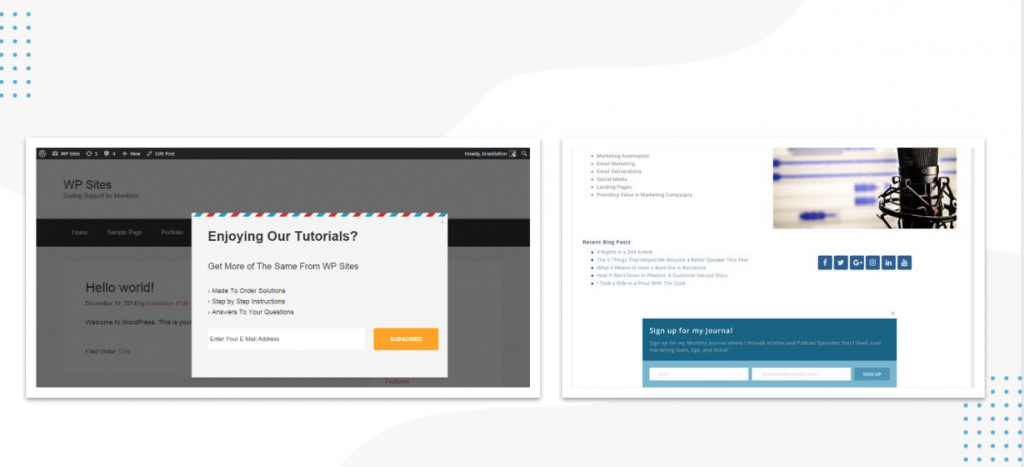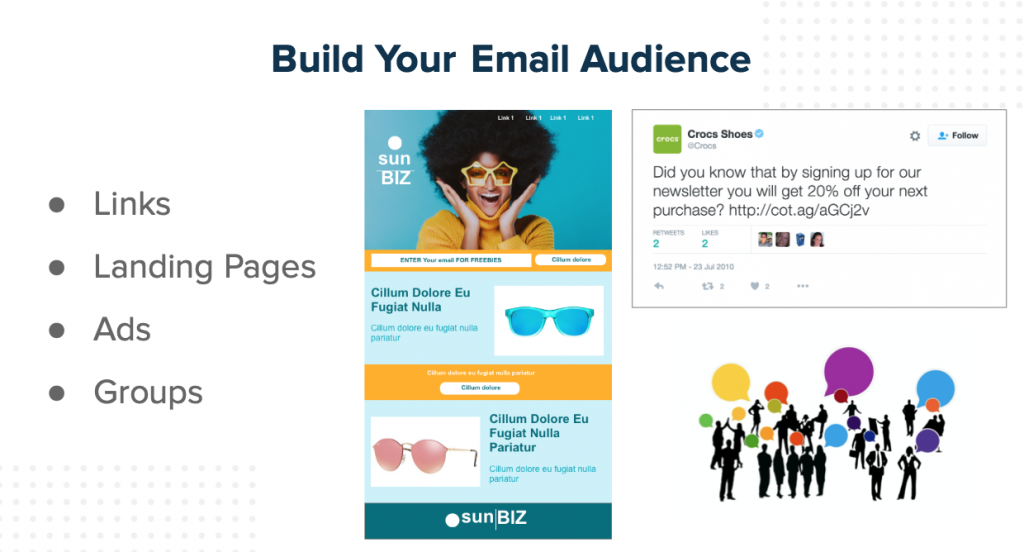Every year, people tend to make a lot of resolutions. Most of them revolve around stopping something. They may want to stop smoking, or maybe stop eating so many COVID snacks! I, myself, have snacked a little too much!
Every year, we all want less distractions and no better time to dwell on that than the start of a new year. What does this mean to you as a marker? It means a lot! It means that your subscribers might lose interest in opening your emails, and others may not feel encouraged to sign up for your newsletters.
Also, It is a new year and a good reason to get excited about email marketing.
Let’s talk about the three things you have to resolve to do in the new year when it comes to your email campaigns.
1. Maintain healthy lists and perform list hygiene.
I am always telling marketers that a healthy list is a profitable one. By emailing people that want to receive your emails and actually open them, you will benefit more. More opens, more clicks, and more conversions.
Sure, you can brag about how many subscribers you have on your list, but if a large percentage of your subscribers are not receiving or opening your emails, you are doing yourself a disservice.
Many people sign up for emails during the holidays only to go dark afterwards. Most seasonal subscribers might be looking for a gift or one-time discount, and may not need your product or services again in the (near) future.
Then you have subscribers that are “cleaning house” when it comes to their inbox and unfortunately, rather than unsubscribe, they ignore your email that you keep sending to them.
This is a huge issue!
It hurts your email deliverability. Ouch! What this means is that your ability to reach the inbox is measured on the ratio of engaged and disengaged subscribers you have on your list.
Of course spam complaints, unsubscribes and bounces also hurt your deliverability, but the hidden damage comes from your “zombie” subscribers.
What can you do about it? Identify subscribers that have been in your account for some time, say six months, and perform list hygiene or a winback campaign for those that have not opened an email in the same amount of time.

You can simply remove them or send them one to three emails asking for them to re-engage. The most important thing is that you keep your subscriber lists lean and mean.
2. Grow your subscriber lists.
Now that you pruned your lists, it is time to replenish your subscriber base!
Make sure that you have a signup form on your website or have a landing page to help you convert visitors into email subscribers. Standard forms are great, but you might want to look into pop-up or pop-over forms as well. Just make sure that you do not show a form to someone until they have had a chance to review the content on your website. Let them get to know you first!

Use social media to augment your list growth. According to a study from Kantar, social media engagement is up 61% because of the COVID-19 pandemic.
Another report from App Annie says that app usage is up 20%, and most of them are social media apps!
This means that you need to get in front of people to entice them to sign up for your emails! Simply post with a link to a landing page or sign up form and inform people why they should subscribe to your emails and maybe include an offer like a discount or download.

Bonus: Remember when we spoke about list hygiene? Did you know that you can target current subscribers that are disengaged using Facebook’s Custom Audience feature to serve them ads? Here is an article I wrote that explains this strategy more.
6. Analyze data.
Nothing is worth doing unless you measure it. You can send emails all week and all year long, but if they are not effective, then you will not be successful.
Again, you can harm your email deliverability with negative actions like bounces, spam complaints and unsubscribes. Look at your email analytics for each email, also look at aggregate data for the week, month, quarter, and year.
What numbers should you be looking at?
Here are some benchmarks to strive for:
- Open Rate ~20%
- Click Rate ~5%
- Unsubscribe Rate<.05% or 5 per thousand.
- Bounce Rate <1%
- Spam Complaints <0.01% or or 1 per thousand.

These are just average statistics. If you are looking for industry specific data, head over to SmartInsights.com.
When looking at your data, what are you seeing? Did certain subject lines help get your emails opened more than others? Were they sales-focused, i.e., “get 20% off today ONLY,” or more informative, i.e., “We have the best DEALS of the year happening now.” This will help you determine what worked in the past and help you plan effective subject lines for 2021.
Are there certain days of the week your emails had higher open rates? By looking at your analytics, you can see the days and times your emails were opened. If Tuesday afternoon seems to be the most popular, why not look at possibly changing your email distribution schedule? Or, consider emailing discount offers during that time. Knowing when to send to your customers – when it’s most convenient for them – is more than half the battle.
Marketing automation can also help here. Many tools can help you send the right message, at the right time, to the right recipient.
For bounces, unsubscribes and spam complaints, your goal should be to lower or maintain lower numbers. Try to reduce fatigue by providing value in each email that you send. It can be a huge turn off if you are always selling in your emails. Even if you are a retailer or e-commerce company, you can add interesting content to your emails like reviews, videos, how-tos and more!
There you have it, three things to help you kick off your new year right when it comes to your email marketing campaigns.
Grow your list, send more emails (at the right time and right person), keep your lists healthy, and analyze your results.
Remember, marketing is a marathon, not a race. Email marketing is a nurturing tool that you can use to grow your business, but you need to make sure that you resolve to make improvements and provide value.
Let me know how your campaigns are doing and if I can help you in any way.
Author
-

Hank is an author, speaker, podcast host and Director of Operations at Kickbox, a Ziff Davis company. With a passion for all things digital and social, combined with more than 25 years of experience in sales and marketing, he has been dubbed the Digital Marketing Infotainer because he makes marketing fun and successful.
View all posts
